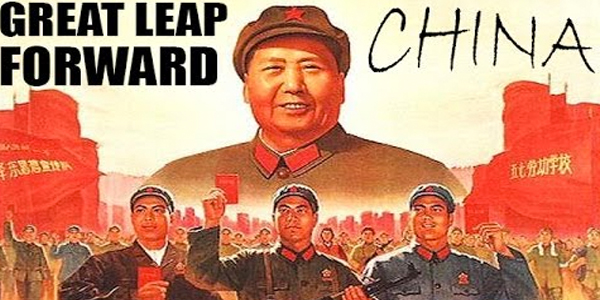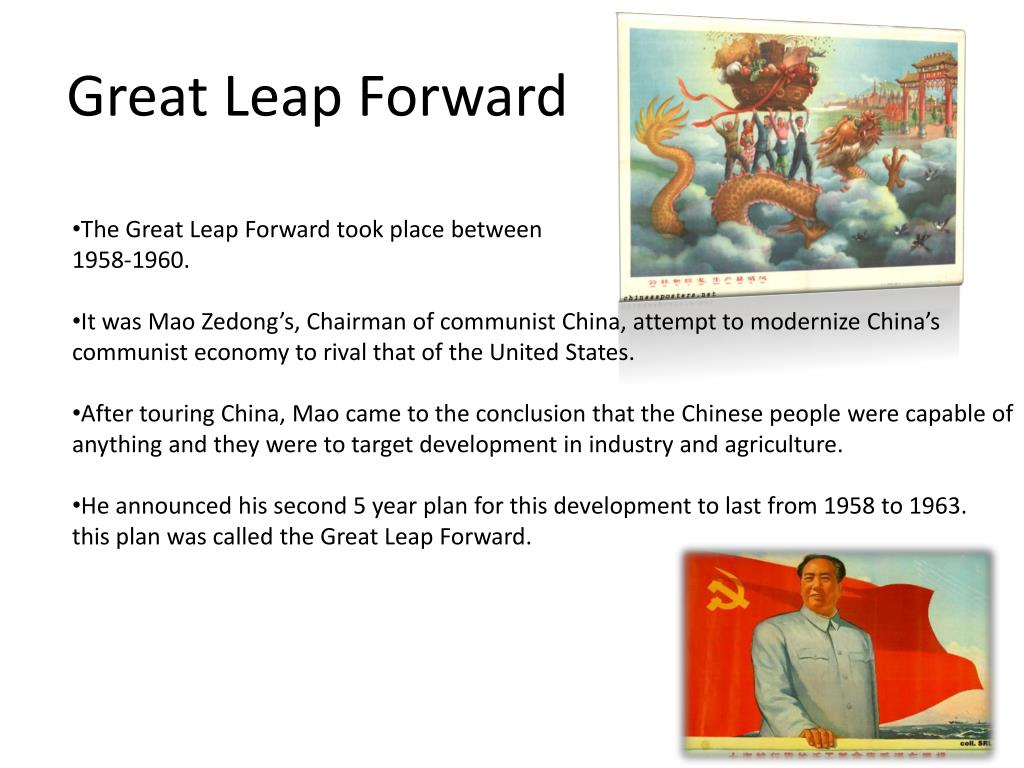

To guarantee that a society keeps on producing profits, entirely depends on the leaders of the macroeconomics department, that have to carry out an overall balance.” Within this chapter I will explain the reasons why the Leap failed, I will seek to demonstrate that the aforementioned “overall balance” was missing and why did ultimately failed.
#Great leap forward how to
“In a planned economy system, the market cannot decide how to use the resources. The central point of the thesis is the last and fourth part.

A specific analysis of how did the Leap’s policies were partially influential. This section concludes with a summary of facts of Sino-Soviet relations, focusing on the interruption of the connections between the two parties. “Thanks to the correction of the mistakes during the first half of the year 1959, if the Lushan Conference didn’t take place, in the second half of the year 1959, the disorders created during 1958 could have been eliminated and the great famine could have ended within the year 1959.” However, the end of this process coincided with the Lushan Conference (2nd July-16th August 1959). Yang Jisheng is a Chinese journalist who worked for the state news agency, Xinhua reporter, but diligently spent many years researching the archives to pull. In that term the Government admitted some of his target mistakes and tried to modify the Leap’s utopian and ambitious purposes. The third chapter addresses the period after the launch of the Leap’s policies. the steel campaign, the water conservancy campaign and the four pests campaign).Īt the end of this section, I will talk about the People’s Communes, seeking to explain their inception and evolution to the formation of the system of “seven guarantees” or “ten guarantees”. Starting with the “Sixty articles on working methods” (21st of January 1958) that launched the Great Leap Forward, I will then explain other contents of the Second Five-Year-Plan (e.g.

The second section reports on the Leap’s policies, ideologies and goals. In particularly I will focus on the First Five-Year-Plan (1953-1957) and on the international relations between China and the Soviet Union. The first chapter focuses on the Leap’s antecedent period it begins with a very brief introduction to the key events after the establishment of the People’s Republic of China (Zhonghua Renmin Gongheguo中华人民共和国) that seeks to provide the reader the general internal and external context of the first years of PRC. As Köll shows, rail provided a blueprint for the past 40 years of ambitious, semipublic business development and remains an essential component of the People’s Republic of China’s politically charged, technocratic economic model for China’s future.The aim of this work is to analyze the Chinese Great Leap Forward (大跃进Dayuejin) (1958-1961) and the reasons why its economic and social policies caused such a big imbalance and deficit in the Chinese economy. Pragmatic management, combining central authority and local autonomy, sustained rail organizations amid shifting political and economic priorities. People were asked to set up factories in their backyards. Industrialization of the country was started on large scale. Through detailed archival research and interviews, Köll builds case studies illuminating the strength of rail administration. 1958 Great Leap Forward (GLF) Campaign was Launched. Elisabeth Köll’s expansive study shows how railroads survived the rupture of the 1949 Communist revolution and became an enduring model of Chinese infrastructure expansion.The railroads persisted because they were exemplary bureaucratic institutions.
#Great leap forward free
The national system that began taking shape in the 1910s suffered all the ills of the country at large: warlordism and Japanese invasion, Chinese partisan sabotage, the Great Leap Forward when lines suffered in the “battle for steel,” and the Cultural Revolution, during which Red Guards were granted free passage to “make revolution” across the country, nearly collapsing the system. Painted in incense ash, it references the agricultural and industrial reforms put in place by Mao Zedong between 19, which lead. Railroads and the Transformation of China is the first comprehensive history, in any language, of railroad operation from the last decades of the Qing Empire to the present.China’s first fractured lines were built under semicolonial conditions by competing foreign investors. Harvard University Press: As a vehicle to convey both the history of modern China and the complex forces still driving the nation’s economic success, rail has no equal.


 0 kommentar(er)
0 kommentar(er)
